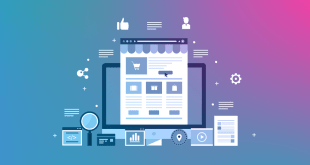In the ever-evolving landscape of digital marketing, businesses are constantly seeking new ways to enhance their online presence and improve conversion rates. One strategy that has proven to be highly effective is hyper-personalization. By tailoring user experiences to individual preferences and needs, companies can create more meaningful connections with their target audience, ultimately leading to higher conversions.
Understanding Conversion Rate Optimization
Conversion rate optimization (CRO) is a crucial aspect of digital marketing. It refers to the process of increasing the percentage of website visitors who take the desired action, such as making a purchase, signing up for a newsletter, or requesting a quote. CRO involves analyzing user behavior, conducting A/B tests, and implementing changes to optimize the user experience.
The Power of Personalization
Traditional marketing strategies often cast a wide net, hoping to reach as many potential customers as possible. However, in the age of information overload, generic marketing messages are easily ignored. Hyper-personalization, on the other hand, allows businesses to create targeted and relevant content that resonates with individual users.
Studies have shown that personalized experiences lead to increased customer satisfaction and loyalty. When customers feel understood and valued, they are more likely to engage with a brand and become repeat buyers. This emotional connection fosters trust and credibility, which are crucial factors in the decision-making process.
Leveraging Data for Personalization
At the core of hyper-personalization is data. Gathering and analyzing user data provide valuable insights into customer behavior, preferences, and pain points. This information can be collected through various channels, such as website interactions, social media, email marketing, and customer surveys.
Utilizing artificial intelligence and machine learning, businesses can process vast amounts of data to create dynamic and real-time personalized experiences for users. By understanding user intent and context, companies can deliver tailored content, product recommendations, and special offers.
Creating Personalized Content
Content is a powerful tool for personalization. By curating content based on user interests and previous interactions, businesses can deliver relevant information at the right time. Personalized content can take various forms, including blog articles, product recommendations, personalized emails, and targeted advertisements.
When crafting personalized content, it is essential to understand the different stages of the customer journey. Tailor content to address the specific needs and concerns of users at each stage, from awareness and consideration to decision-making. This approach ensures that users receive the most relevant information, increasing the likelihood of conversion.
Enhancing User Experience through Personalization
User experience (UX) plays a pivotal role in conversion rate optimization. Personalization can significantly impact UX by streamlining navigation, reducing clutter, and presenting information in a user-friendly format. Here are some key strategies to enhance UX through personalization:
Personalized Product Recommendations:
Implement AI-driven product recommendation engines that suggest relevant products or services based on user behavior and preferences. This can increase cross-selling and upselling opportunities.
Dynamic Content Customization:
Tailor website content based on user demographics, location, and browsing history. For instance, an e-commerce website can display different promotions for users in different regions.
Personalized Emails:
Craft personalized email campaigns that address individual interests and needs. Segmented email lists ensure that subscribers receive content that aligns with their preferences.
Customizable User Profiles:
Allow users to create profiles and customize their preferences. This fosters a sense of ownership and control over their experiences.
Overcoming Challenges and Privacy Concerns
While hyper-personalization offers numerous benefits, it is essential to address potential challenges and privacy concerns. Collecting and utilizing user data come with responsibilities, and businesses must be transparent about data usage and seek user consent.
Respecting user privacy is critical to building trust and maintaining a positive brand image. Implement robust data protection measures, comply with relevant regulations such as GDPR, and provide clear opt-out options for users who do not wish to participate in data-driven personalization.
Final Words
Hyper-personalization is a game-changer in the world of digital marketing. By harnessing the power of data and using innovative technologies, businesses can create tailored user experiences that lead to higher conversions. Remember to strike a balance between personalization and privacy, always putting the user at the center of your strategies. Embrace hyper-personalization, and you’ll be on your way to building lasting relationships with your customers.
Commonly Asked Questions
Q1: Is hyper-personalization only suitable for e-commerce businesses?
A1: No, hyper-personalization can be beneficial for businesses across various industries. From e-commerce to healthcare and financial services, tailoring user experiences can enhance customer satisfaction and boost conversions.
Q2: How can I collect user data ethically for hyper-personalization?
A2: Ethical data collection involves obtaining user consent, providing transparent privacy policies, and using data only for relevant purposes. Implement secure data storage and comply with data protection regulations.
Q3: Are there any risks of over-personalization?
A3: Yes, over-personalization can lead to user fatigue and a sense of intrusion. Avoid bombarding users with excessive personalized content and ensure that the personalization is genuinely valuable to them.
Q4: Can small businesses benefit from hyper-personalization?
A4: Absolutely! Hyper-personalization is not limited to large enterprises. Small businesses can leverage customer data to create personalized experiences, nurturing customer loyalty and driving conversions.
Q5: How do I measure the success of hyper-personalization efforts?
A5: Key performance indicators (KPIs) for hyper-personalization may include conversion rate, click-through rate, time spent on site, and customer retention. Analyze data regularly to fine-tune your personalization strategies.
 webfily
webfily



